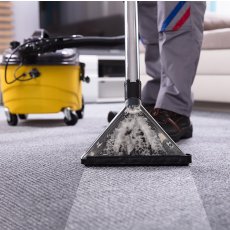Cats are Complex and Sensitive Beings
Cats are highly intelligent creatures that are very sensitive to the world around them.
They need stimulation, play, love and your time, just like any pet.
When it comes to their health, cats can be very fragile and are often masters at hiding signs
of illness. Spotting the warning signs and diagnosing health conditions early makes it easier
for cat families to make good decisions and also save money on veterinary care.
Looking out for your cat’s emotional needs and physical health will help your family member
live a longer, better and healthier life.
Feline wellness care/ Disease prevention for cats
With the right preventive care, and early disease detection, cats are living 20 years and more.
Cats are complex creatures with delicate systems. Just like humans, they can develop kidney, heart and thyroid disease, and are also prone to other serious illnesses such as diabetes. Cats are also masters at hiding their illness until it’s too late, so spotting the warning signs early is essential.
In addition, each breed of cat has its own characteristics and health conditions. For example, Maine Coon cats often develop heart disease and hip dysplasia, Siamese cats are prone to respiratory problems and spinal disorders, and Exotic Shorthairs often get sinus conditions.
It’s important to treat each cat as an individual, recognizing his or her distinct hereditary, start in life, nutrition, environment and other factors.
SAVE money on your cat’s veterinary care by following these tips:
- Bring in multiple cats for a discount on wellness exams!
- Spot illness early by becoming familiar with your cat’s normal eating and litter habits.
- Get twice annual physicals to avoid more costly care later, especially in cats age 7 and older!
- Consider early disease detection to spot health problems before they become serious.
- Cat proof your home to prevent poisoning and injury.
- Spay/neuter your cat to prevent certain cancers and prevent roaming and spraying.
- Brush your cat’s teeth regularly with enzyme toothpaste to prevent tooth decay and gum disease.
- Feed your cat a good protein-based diet that contains no more than 7% carbohydrates.
- Brush your cat regularly to reduce build up of hairballs which can require surgical removal.
- Keep your cat indoors to avoid injury and disease.
Bi-annual physicals for cats
Cats mature very quickly. A 1-year-old cat is equivalent in age to a 15-year-old human. A 2-year-old cat is equivalent to a 25-year-old human.
All cats should have a physical twice annually to help spot health conditions early before they become major concerns. Cats with chronic conditions (such as diabetes or heart disease) should be seen more often.
Healthy cats under age 7 should get:
- Annual blood work
- Twice annual exam to check for changes
Bi-annual physicals help your veterinarian detect health problems early.
Cats age 7 and older (considered “middle age”) should get:
ANNUAL:
Blood work to check:
- Liver and kidney function
- Blood sugar levels
- White and red cell counts
- Urinalysis to evaluate kidney function and urinary tract health
- Rabies vaccine
- Thyroid screening
- Fecal testing for intestinal parasites for indoor cats. (3-4 times annually for outdoor cats)
TWICE ANNUAL:
- Dental exam
- Ear screen for ear infections and ear mites
- Weight / body condition exam
- Blood pressure screen
- Mammary gland check for females
- Evaluation for pain
- Abdominal palpation
- Anal glands check
- Eye exam
- Genital exam
- Heart and lungs exam
- Skin and fur exam
- Behavior review / life enrichment analysis
Dental care for cats
According to the American Veterinary Dental Society, 70% of cats show signs of dental disease by age 3. Just like humans, cats experience tooth decay, bleeding gums and tooth loss. In serious cases, bacteria travel through the bloodstream and cause heart, lung, liver and kidney damage.
Any of the following may be symptoms of dental disease in your cat:
- Noticeable pain when you touch his/her mouth or face.
- Bad breath (halitosis) which could signal a build-up of bacteria.
- Redness or bleeding around the gums.
- Swelling in the face or mouth area.
- Excessive drooling from the mouth.
Early disease detection – all cat breeds
Cats are masters at hiding signs of illness.
In nature, showing weakness made them easy prey for predators.
Cats have fairly predictable schedules. They normally sleep 16 to 18 hours per day, use the litter box when needed, drink water and eat food regularly. Any changes in behavior or routine can be the first signs of disease or illness.
SO IT'S IMPORTANT TO WATCH FOR SUBTLE CHANGES THAT COULD BE SIGNS OF ILLNESS OR DISEASE IN YOUR KITTY. CATS NATURALLY MASK SIGNS OF ILLNESS – YOU ALMOST HAVE TO BE A DETECTIVE!
If you notice ANY of the following changes in your cat, contact your veterinarian immediately.
Physical changes
- Bad Breath
- Limping
- Any changes in breathing (slower or more rapid)
- Panting/difficulty breathing
- Difficulty running or jumping
- Weight loss/gain
Elimination habits
- Runny stool or blood in stool
- Bloody urine or larger amount of urine
- Firm, dry stools (nuggets) – often sign of constipation
- Inability to urinate or more frequent urination
- Urinating only small amounts
- Crying out in the litter box
Behavior changes
- Sleeping more -- or less
- Lack of play in an otherwise playful cat
- Grooming less
- Increased vocalization
- Decrease or increase in appetite
- Not eating or drinking
- Change in drinking habits (drinking more -- or less)
- More withdrawn
- Changes in disposition
- Avoids interaction or affection
- More affectionate or “clingy”
- Retreating – less engagement with people
- Not as active
Early disease detection in cats – breed specific
Some breeds of cat are more prone to certain diseases and illnesses than others. Please see the chart below. Note, that while this indicates a predisposition toward a certain condition, it does not mean that this type of cat will always have this type of health problems. It does, however, mean that families of these cats should be more diligent in spotting the warning signs of these health conditions.
Trimming cats' nails
Scratching is a normal feline behavior. Cats do this to ease anxiety and make themselves more comfortable in their surroundings. Cats scratch just like they rub their faces up against things.
Even declawed cats go through the motions of scratching to stretch their muscles and mark territory.
You cannot stop your cat from scratching, but you do have several options:
- Scratching posts/platforms
- Nail trims
- Declaw
Nail trims can be easily
done at home!
1. Scratching Posts/Platforms
Every cat should have a scratching post or platform. We recommend those wrapped in sisal rope (has a tough, fibrous texture), sisal fabric or burlap. Place a little cat nip on the post or platform to make it more desirable to scratch. If your kitty doesn’t like one material, try another. You can make your own scratching post or platform with any type of material. Just make it tall enough and long enough so that your cat can stretch out, and stable enough that it won’t tip over during vigorous scratching.
Reinforce your cat’s use of the post or platform with verbal praise and petting. If, your cat still scratches the furniture, make an unpleasant sound such as a loud clap and sharply say his or her name. Place kitty by the scratching post or platform and drag his or her paws across it while providing positive praise. Always offer your kitty alternatives and remember to reward good behavior. Be consistent and patient.
If your kitty is still scratching furniture, temporarily place double-sided tape on the corners.
Your cat will hate the stickiness and will try to find somewhere else to scratch.
2. Nail Trimming
Trimming your cat’s nails keeps them short with no hooked or sharp points to snag material. You can ask your veterinarian to trim them – or you can do this fairly easy at home. It also provides some good bonding time for you and your kitty. If possible, start introducing a nail trimming routine when your cat is young. If your cat is older, it may take a little time for kitty to get used to it.
3. Declaw
Declawing your cat is a way of permanently removing the nails from your cat’s paws. Some families choose this option.
Parasites in cats
While it’s generally recommended that cats get flea and heartworm preventives, this is a personal decision that each cat family should make based on complete information and careful consideration.
Talk to your veterinarian about the benefits versus the risks of these medications:
- Flea preventive given at home once monthly.
- Heartworm* preventive given at home once monthly. The heartworm preventives we recommend are available by prescription only. One is applied topically to the skin; the other is a chewable tablet. A current physical exam is required to make sure cats are healthy before preventives can be prescribed.
Deworming for intestinal parasites. The most common are:
- Roundworm
- Hookworm
- Coccidia
- Giardia
Flea preventive can be given monthly at home.
Indoor cats should have an annual fecal test to check for these parasites prior to deworming.
Outdoor cats should be dewormed 3 to 4 times a year.
Vaccines for cats
While it’s generally recommended that cats have several types of annual vaccines, The Cat Practice does not recommend over-vaccinating cats. We also stress that this is a personal decision that each cat family should make, based on complete information and careful consideration.
Talk to your veterinarian about the benefits versus the risks of these vaccines:
- Annual rabies vaccine. The Cat Practice utilizes the Merial™ PUREVAX® Feline Rabies vaccine in cats 12 weeks of age and older. We consider this the safest rabies vaccine since it does NOT contain adjuvants, which have been linked to fast-growing cancerous tumors at the site of the vaccine (about 1 in 10,000 cats). In rare instances, the vaccine may cause lethargy, fever and inflammation.
- Annual feline leukemia vaccine until 7-8 years of age. We recommend the Feline Leukemia vaccine only if your cat's risk of exposure is increased, such as by spending any time outdoors or if your home fosters rescue cats. This vaccine also does NOT contain adjuvants (same as Rabies vaccine above), and is administered through an injection under the skin.
- FVRCP (Distemper) vaccine every 3 years after initial kitten series, until 7-8 years of age. The FVRCP vaccine is given as drops placed into the cat's nostrils. No needles are used. We consider this a SAFER vaccine. You may notice a little sneezing for a few days following the vaccine, which is normal. A small number of cats may experience runny eyes and/or nasal discharge. Vomiting may occur or, in rare instances, nasal or oral ulcers.
Dental cleaning / surgery
Since dental cleaning requires that your cat must be anesthetized, it’s considered a form of surgery. Your kitty will receive the same care and monitoring that he/she would receive for any surgical procedure including:
- Use of safe inhalant gas anesthesia
- Insertion of IV catheter to administer fluids
- Continuous monitoring of vital signs: heart rate, blood pressure, oxygen flow and body temperature
- Pain management
A veterinary nurse at The Cat Practice performs a dental cleaning under anesthesia.
More than 70% of cats get dental disease by age 3.
DENTAL CLEANING is done to remove excessive plaque and tartar on your cat’s teeth. If left untreated, plaque and tartar lead to inflammation of the gums that causes gum disease. The tooth surfaces are also polished to help slow down future accumulation of plaque and tartar.
While your cat is anesthetized, we will also:
- Check for broken teeth
- Probe each tooth to check for disease
- Take x-rays to examine areas below the gum line*
Alternatives to surgery
At The Cat Practice, we avoid surgery at all cost. The exception is spay and neuter. We believe that this is an essential part of any pet’s health and wellbeing, and the only way to prevent unwanted litters; reduce the risk of some cancers; and avoid unsociable behaviors such as spraying, marking and aggression.
In most other cases, surgery is not the only alternative. Surgery for your cat can be costly, requires additional recovery time and is not without risks. Today there are a number of alternative options to surgical intervention, including:
- Physical rehabilitation
- Treatment with medication
- Treatment with special diet/supplements
Many conditions can be treated with special diet and supplements.
If surgery is necessary
Veterinary orthopedic surgeon Dr. Gumbs performing surgery.
In some cases, surgery may be the only option. If your cat has a lump or mass, an obstruction or a severe bone fracture, surgery is often the only treatment. In such cases, QUICK ACTION is required to correct potentially fatal situations, such as:
- Mass biopsies and removals
- Bladder stones
- Urinary obstructions
- Foreign bodies that have been swallowed
- Severe fractures (surgery performed by veterinary orthopedic surgeon Dr. John Gumbs)
If your cat requires surgery, it will be performed in our state-of-the-art surgical suite where we take every precaution to reduce risk and make your pet as comfortable as possible.
This includes:
- Recommended recent physical exam
- Recommended pre-anesthetic blood panel and urinalysis
- Possible echocardiogram* (for cats with a heart murmur or for older cats; all echocardiograms are performed by veterinary cardiologist Dr. William Brown)
- Use of safe inhalant gas anesthesia
- Insertion of IV catheter to administer fluids
- Continuous monitoring of vital signs: heart rate, blood pressure, oxygen flow and body temperature
- Pain management
The Cat Practice, pc
875 S. Worth, Birmingham, MI 48009
248-540-3390
This email address is being protected from spambots. You need JavaScript enabled to view it.
EMERGENCIES – In an emergency, we can see your cat immediately during regular hours.
Please call us on your way so we can prepare for your arrival.
Appointments necessary for non-emergencies.
Hours:
Monday & Thursday: 8 a.m. – 9 p.m.
Tue, Wed & Fri: 8 a.m. – 7 p.m.
Saturday / Sunday: 8 a.m. – 2 p.m.
We are closed: New Year's Day, Easter, Memorial Day, July 4, Labor Day, Thanksgiving, Christmas Day. Call for special hours on: Christmas Eve and New Year's Eve.
House Calls
Some feline families prefer home visits, particularly if they have a sick kitty or multiple cats.
Call ahead for home visit pricing and to schedule 248-540-3390








 Vectora Design
Vectora Design